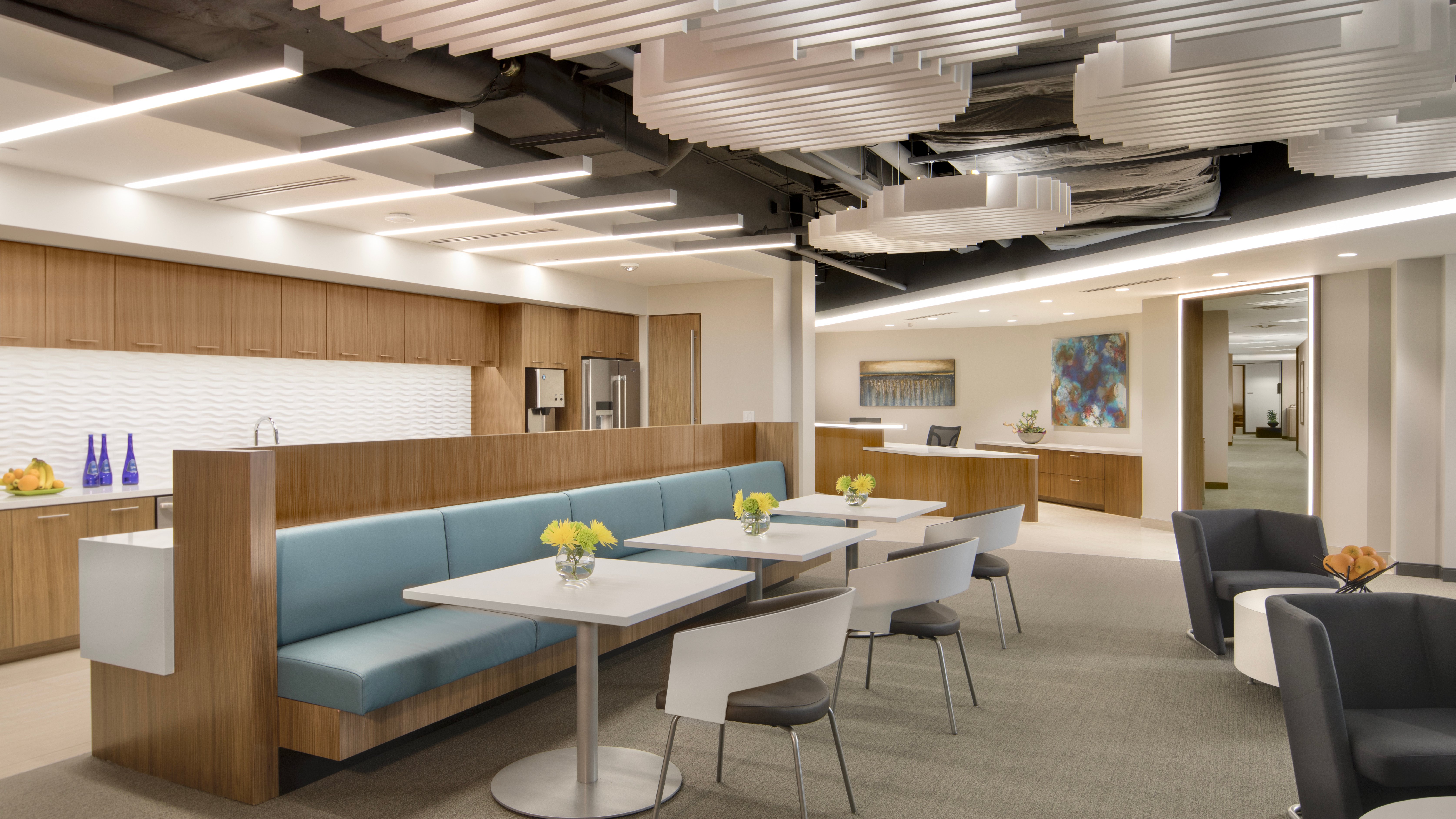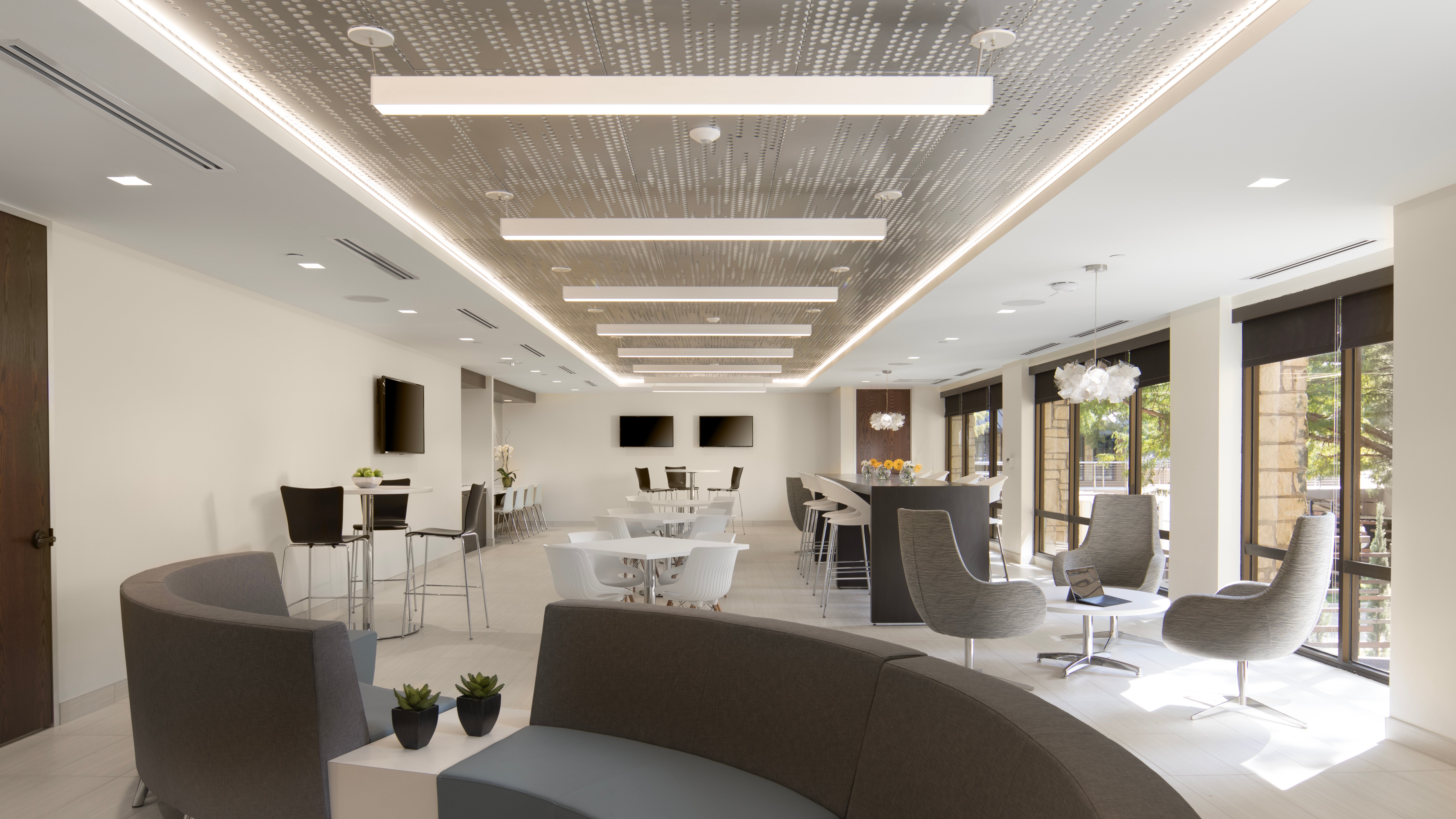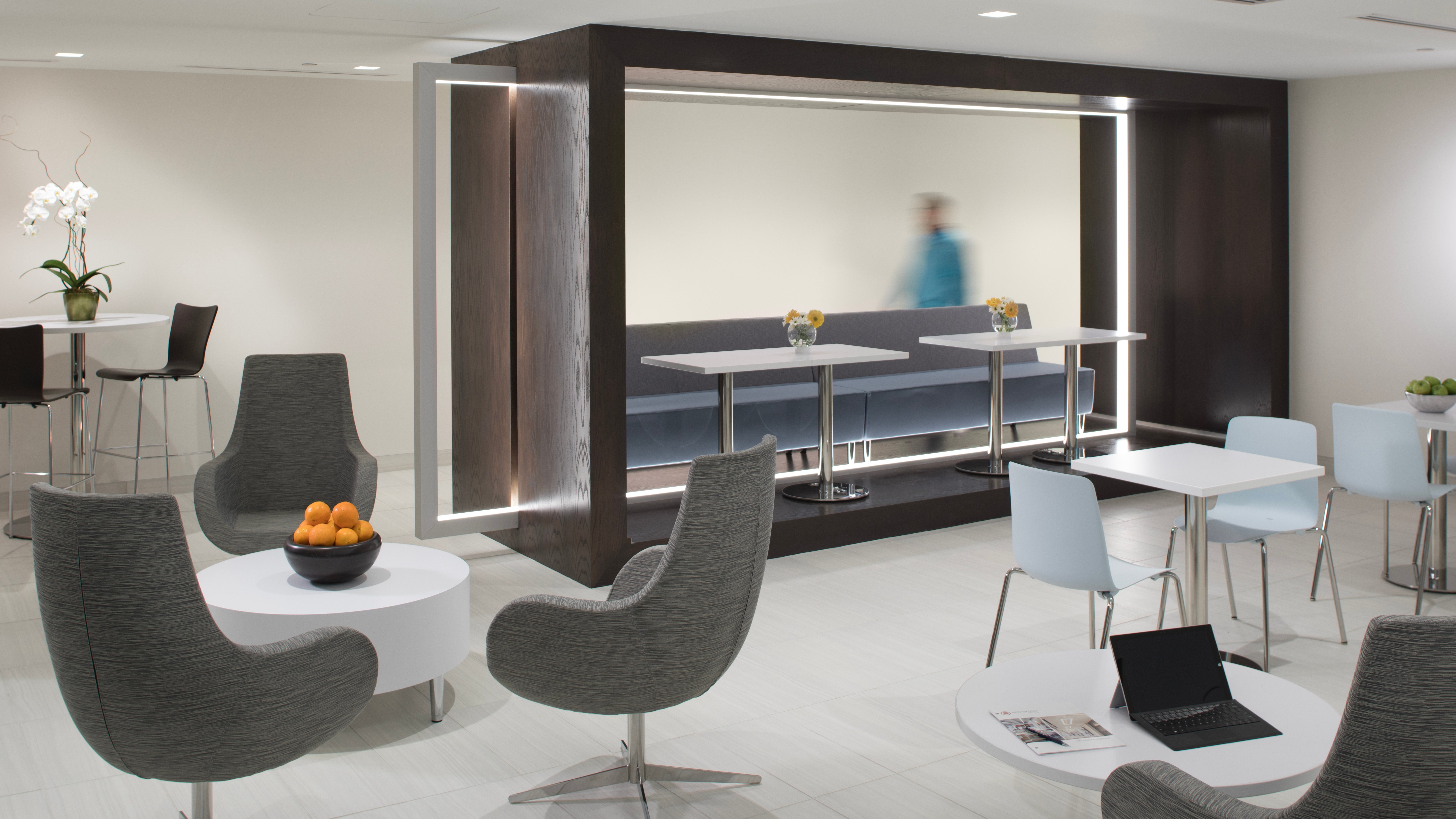Illuminate Your Business: Brighten Your Bottom Line
Lighting plays a crucial role in commercial/workplace spaces. It affects everything from the overall atmosphere to the productivity and safety of employees. It also supports your brand and enhances your customers’ experience. So how do you create an environment that captures both the vision of a space but also maximizes functionality?
The first step is understanding the role and function that light plays in an office setting. One goal any business should have for lighting design is for it to add value to the bottom line. It doesn’t matter if you are an architect, interior designer, developer, manager, or owner of the business, EVERYTHING should add value to the profitability of the company. Lighting plays a critical role in all aspects of your business. It affects your brand, productivity, safety, and even your employees’ mood and health.
The Role of Lighting in Commercial Spaces
PRODUCTIVITY
Designing a commercial office space to maximize productivity is crucial. Studies from UNC Kenan-Flagler Business School show that worker productivity is greatly affected by lighting. Poor lighting can cause eyestrain, headaches, and fatigue. All of this decreases productivity. Proper lighting can help employees stay alert, focused, and energized. The Illuminating Engineering Society publishes recommendations for the light levels and contrast ratios that are acceptable in office environments. For instance, there is a maximum of 4 to 1 uniformity ratio in the near-field environment, meaning that no object’s brightness (footlamberts and not foot-candles) should be more than 4 times brighter than any other object in the near field or immediate vicinity. Picture your office or cubicle. Look around you and see if all objects are about the same brightness. Neutral-color furniture and even illumination help minimize contrast. Black or dark wood cabinets and white uplit ceilings are a recipe for high contrast and are not advisable in a work environment.
AMBIANCE
We don't usually use the word ambiance for a commercial space, but the definition applies:
Ambiance (noun)
The special atmosphere or mood created by a particular environment
Every space has ambiance no matter how special or insignificant the atmosphere. The real question is whether or not the lighting is adding or detracting from the primary goals of the business. The type of lighting used greatly affects the mood and feel of the environment. Warm lighting creates a cozier and more comfortable atmosphere, while cooler lighting creates a more modern, serious, and professional vibe.
BRANDING
Lighting is also used to highlight the company’s brand and create a unique and memorable customer experience. Creative lighting techniques and signage help businesses stand out by creating a strong visual identity. But reinforcing branding is not just accenting the company sign or logo behind the reception desk. Accenting architectural or interior design features can also reinforce the brand. Is the space edgy, relaxed, serious, formal, masculine, feminine, zoomy, groovy? Who do you want to appeal to? Is this a law firm or a dot-com? Is the company’s product low price and high volume or high price and low volume? A properly selected lighting design and system can reinforce any or all those space objectives.
See our work at work! Download our commercial building booklet.
The Function of Lighting
Many of the goals and roles of the lighting design are lofty and sophisticated, and the impact can be hard to measure. However, two properties that are easy to measure are energy and safety.
ENERGY EFFICIENCY
We all know that we have energy codes to adhere to, but how we do that is up to us. Where a lighting designer spends the allowed energy in a lighting design should be done in a manner that affects the bottom line and makes the space “special” while using every possible watt available. LED lighting has greatly impacted the market due to its energy efficiency, lifespan, sustainability, and quality of light. It also has the lowest energy cost of any lighting option. And since it is an excellent mimic of natural light, it propels productivity within the workplace.
SAFETY
Adequate lighting is also crucial for safety in commercial spaces. Well-lit areas can help prevent accidents and injuries, while poorly lit areas can create hazards and increase the risk of accidents. Lighting can also increase the perception of safety by providing very little glare and enhancing way-finding in spaces like parking garages. Proper design makes it easier to see and navigate at night, and it adds a degree of comfort and safety. The IES publishes foot-candle recommendations for all areas and is the basis for safety in the United States. If there is an accident or someone gets hurt, then the IES recommendations will be evaluated to see if lighting played a role. Code minimums for emergency lighting must be calculated and documented.
The Lighting Designer Role
Whether the project has a full-time lighting designer or not, someone is designing the lighting for a space. Is that person considering all the objectives above? Can they navigate the codes and requirements? And can they actually add value to the bottom line? There are many part-time lighting designers who do a good job with many of the objectives above. Interior designers are great at choosing decorative lighting elements. Architects have a wonderful understanding of the visual nature of their forms and materials and, with the help of the manufacturer’s rep community, can make a space interesting and functional. Those professionals need to be commended for their efforts and the results they achieve with part-time training.
Lighting designers, however, are full-time professionals. They keep up with the latest technologies, understand equipment pricing, offer multiple solutions to a challenge, and know instinctively the correct fixtures for the application based on the budget, visual desires, and physical and code constraints of each project. Many of the part-time folks can do much of that, but the full-time designers are the real rock stars who make your space sing and your bottom-line boom.
Full-time lighting designers also have relationships in the industry that can be of help if there is a problem. The lighting designer strives to bring about the best visual result with the money the ownership has to spend. Others in the design and construction process may have different motivations based upon the profit they receive from the sale of fixtures.
How do you create an environment that captures the vision of a space and maximizes functionality at the right cost? The short answer is, with the help of a lighting designer.
Learn more about what you can expect from working with a professional lighting designer with this step-by-step infographic.
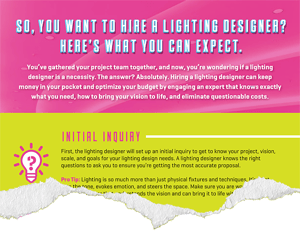
Lighting is a critical element of commercial space design and should be carefully considered to create a comfortable, safe, and productive environment for employees and an attractive and memorable experience for customers.
